Residential Transformer Explained: Definition, Function & Use in Homes?
Are you confused about how electricity gets safely into your home? You’re not alone. Many homeowners are unaware of the crucial role residential transformers play in powering our daily lives. But what exactly are these devices, and why are they so important for your home’s electrical system?
A residential transformer is a compact power device that steps down high-voltage electricity from utility lines to usable levels (120/240V) for household appliances. It ensures safe, reliable power for homes and is commonly pole-mounted or pad-mounted in suburban and urban areas.
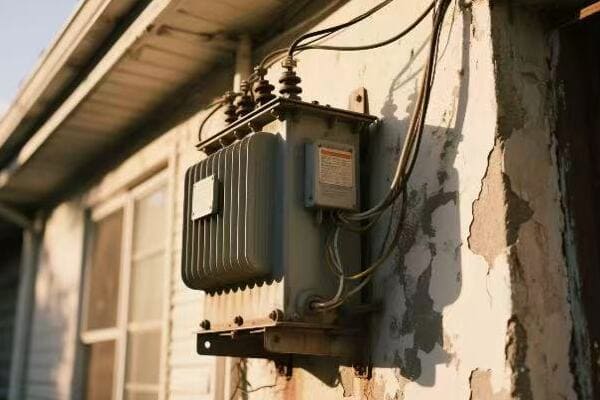
In this comprehensive guide, I’ll walk you through everything you need to know about residential transformers. Whether you’re a homeowner curious about your electrical system or a professional looking to expand your knowledge, this article will provide valuable insights into these essential devices that power our homes.
What Is a Residential Transformer?
Have you ever wondered how the high-voltage electricity from power lines becomes safe to use in your home? This is where residential transformers come in. But what exactly are these devices, and why are they so crucial for your home’s electrical system?
Residential transformers are distribution-level electrical devices designed to convert high-voltage power from utility grids into lower voltages suitable for household use. They play a crucial role in delivering stable energy for lighting, appliances, and HVAC systems. These transformers are the vital link between the power grid and your home’s electrical system.

Understanding Residential Transformers
Let’s break down the key aspects of residential transformers:
- Purpose and Function
- Basic Components
- Voltage Transformation
- Location and Installation
- Safety Features
Purpose and Function
Residential transformers serve a critical role:
- Step down high voltage (typically 7.2kV to 14.4kV) to usable household voltage (120/240V)
- Provide a safe interface between utility power and home electrical systems
- Ensure stable power supply for all household electrical needs
I once visited a newly developed suburban area where the installation of residential transformers was underway. It was fascinating to see how these compact devices were the key to powering entire neighborhoods.
Basic Components
A typical residential transformer consists of:
- Primary winding (connected to high-voltage lines)
- Secondary winding (connected to household circuits)
- Core (usually made of laminated steel)
- Insulating material (oil or dry-type)
- Protective casing
During a recent home renovation project, I had the opportunity to examine a pad-mounted transformer up close. The compact design and robust construction were impressive, considering the critical function it serves.
Voltage Transformation
The transformation process is based on electromagnetic induction:
- High voltage in the primary winding creates a magnetic field
- This field induces a lower voltage in the secondary winding
- The ratio of primary to secondary windings determines the voltage step-down
Here’s a simple breakdown of voltage transformation:
| Input (Primary) Voltage | Output (Secondary) Voltage | Typical Application |
|---|---|---|
| 7,200V | 120/240V | Single-family homes |
| 14,400V | 120/240V | Larger residential areas |
| 4,800V | 120/208V | Multi-unit dwellings |
Location and Installation
Residential transformers are strategically placed:
- Pole-mounted: Common in older neighborhoods and rural areas
- Pad-mounted: Prevalent in newer developments and underground power systems
- Sometimes installed in basements or on roofs in urban high-rises
Safety Features
Modern residential transformers include various safety features:
- Overload protection
- Short-circuit protection
- Thermal monitoring
- Weatherproof enclosures for outdoor units
Key points to remember about residential transformers:
- They are the crucial link between high-voltage power lines and your home’s electrical system
- Transformers step down voltage to safe, usable levels for household appliances
- They come in various types suitable for different residential settings
- Safety features are integral to their design and function
- Proper installation and maintenance are crucial for reliable home power supply
In my experience, understanding the basics of residential transformers can be incredibly useful for homeowners. I’ve seen cases where this knowledge helped residents communicate more effectively with electricians and utility companies during power issues or home renovations.
As we move forward to discuss how these transformers work, keep in mind the critical role they play in safely delivering power to your home. Their function, though often overlooked, is fundamental to our modern, electricity-dependent lifestyles.
How Residential Transformers Work?
Are you curious about the inner workings of the device that safely brings electricity into your home? Understanding how residential transformers function can seem complex, but it’s fascinating once you grasp the basics. So, how exactly do these crucial devices transform dangerous high-voltage electricity into the safe, usable power that runs your household appliances?
Residential transformers work on the principle of electromagnetic induction. They use two coils of wire – primary and secondary – wound around an iron core. When alternating current flows through the primary coil, it creates a changing magnetic field. This field induces a voltage in the secondary coil, which is then distributed to homes at a lower, safer voltage level.
The Inner Workings of Residential Transformers
Let’s break down the operation of residential transformers:
- Electromagnetic Induction Principle
- Core and Windings
- Voltage Step-Down Process
- Insulation and Cooling
- Load Management and Efficiency
Electromagnetic Induction Principle
The fundamental principle behind transformer operation:
- Alternating current in the primary winding creates a changing magnetic field
- This changing field induces voltage in the secondary winding
- The number of turns in each winding determines the voltage ratio
I once explained this concept to a curious homeowner using a simple demonstration with two coils and a magnet. Moving the magnet through one coil induced a small current in the other, illustrating the basic principle of how transformers work.
Core and Windings
The physical components that make induction possible:
- Core: Usually made of laminated steel to reduce energy losses
- Primary winding: Connected to the high-voltage power line
- Secondary winding: Delivers lower voltage to residential circuits
During a recent factory tour, I observed the precision involved in winding transformers. The careful layering of windings and core assembly is crucial for efficient operation.
Voltage Step-Down Process
How the voltage is actually reduced:
- Input voltage (e.g., 7,200V) enters the primary winding
- Magnetic field induces voltage in the secondary winding
- Fewer turns in the secondary winding result in lower output voltage (e.g., 240V)
Here’s a simplified example of the step-down process:
| Primary Winding | Secondary Winding | Input Voltage | Output Voltage |
|---|---|---|---|
| 1000 turns | 33 turns | 7,200V | 240V |
Insulation and Cooling
Crucial for safe and efficient operation:
- Oil-immersed: Uses mineral oil for insulation and cooling
- Dry-type: Uses air or solid materials for insulation
I recall a project where we opted for a dry-type transformer in a residential high-rise due to fire safety concerns. The absence of oil made it a safer choice for indoor installation.
Load Management and Efficiency
Transformers must handle varying loads efficiently:
- Designed to operate optimally at average household demand
- Can handle short-term overloads (e.g., during peak usage times)
- Energy efficiency is crucial to minimize losses
Key points to understand about transformer operation:
- The principle of electromagnetic induction is fundamental to transformer function
- The ratio of turns in primary and secondary windings determines voltage step-down
- Proper insulation and cooling are essential for safe, efficient operation
- Transformers are designed to handle varying loads throughout the day
- Energy efficiency in transformers directly impacts household electricity costs
In my experience, grasping these operational principles helps homeowners appreciate the complexity behind their seemingly simple power supply. I’ve seen this understanding lead to more informed decisions about home electrical systems and energy usage.
For instance, during an energy efficiency consultation, explaining how transformer losses affect overall power consumption helped a homeowner understand the importance of using energy-efficient appliances to reduce the load on their local transformer.
As we move on to discuss common types of residential transformers, keep in mind how these operational principles apply to different designs and installations. Understanding the basics of how transformers work sets the foundation for appreciating the various types used in residential settings.
Common Types of Residential Transformers?
Are you aware of the different types of transformers that might be powering your home? The variety of residential transformers can be confusing, but understanding these types is crucial for homeowners and professionals alike. So, what are the common types of residential transformers, and how do they differ in their applications?
Common types of residential transformers include pole-mounted, pad-mounted, and compact substation units. Pole-mounted transformers are typically used in rural or suburban areas, pad-mounted transformers are popular in underground cable systems in urban neighborhoods, and compact substation units are often used in gated communities or apartment complexes. Each type is selected based on factors like grid layout, safety, noise, and maintenance accessibility.
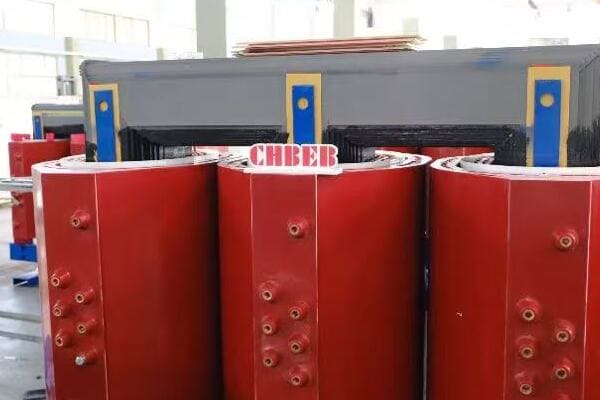
Exploring Residential Transformer Types
Let’s examine the main types of residential transformers:
- Pole-Mounted Transformers
- Pad-Mounted Transformers
- Compact Substation Units
- Specialized Residential Transformers
- Factors Influencing Transformer Selection
Pole-Mounted Transformers
These are the most common in many areas:
- Mounted on utility poles, typically seen in older neighborhoods and rural areas
- Compact design, usually cylindrical
- Easily accessible for maintenance, but exposed to weather elements
I recently worked on a project in a suburban area where pole-mounted transformers were the preferred choice. Their elevated position provided protection from flooding and vandalism, which were concerns in that particular location.
Pad-Mounted Transformers
Increasingly popular in newer developments:
- Installed on concrete pads at ground level
- Enclosed in metal cabinets for safety and aesthetics
- Ideal for areas with underground power distribution
During a recent residential development project, we opted for pad-mounted transformers. Their low profile and ability to blend with landscaping made them an attractive option for the homeowners’ association.
Compact Substation Units
Used in larger residential complexes:
- Combine transformer and switchgear in one unit
- Suitable for apartment buildings or gated communities
- Offer more power capacity and control options
Here’s a comparison of these common transformer types:
| Type | Typical Location | Advantages | Considerations |
|---|---|---|---|
| Pole-Mounted | Rural, suburban areas | Easy maintenance, less ground space | Exposed to elements |
| Pad-Mounted | Urban, new developments | Aesthetically pleasing, protected | Requires ground space |
| Compact Substation | Large residential complexes | Higher capacity, more control | Larger footprint, higher cost |
Specialized Residential Transformers
Some unique situations require specialized transformers:
- Underground vault transformers for dense urban areas
- Submersible transformers for flood-prone regions
- Low-noise transformers for noise-sensitive areas
I once worked on a project in a flood-prone coastal area where we used specially designed submersible transformers. These units could continue operating even when temporarily submerged, ensuring power reliability during severe weather events.
Factors Influencing Transformer Selection
Several factors determine the choice of transformer:
- Local utility standards and preferences
- Environmental conditions (climate, flood risk, etc.)
- Aesthetic considerations of the neighborhood
- Maintenance accessibility
- Future growth and power demand projections
Key considerations when dealing with residential transformer types:
- Understand the specific needs and constraints of the residential area
- Consider long-term maintenance and replacement accessibility
- Factor in environmental conditions and potential hazards
- Balance aesthetics with functionality, especially in residential areas
- Consider future power needs and potential for area growth
In my experience, the choice of transformer type can significantly impact both the reliability of power supply and the overall aesthetics of a residential area. I’ve seen cases where the wrong choice led to maintenance difficulties or community dissatisfaction.
For example, in a recent urban renewal project, switching from older pole-mounted transformers to modern pad-mounted units not only improved the visual appeal of the neighborhood but also enhanced safety and reliability by moving the transformers away from overhead lines and potential vehicle collisions.
As we move forward to discuss the differences between residential and commercial transformers, keep in mind how these various types of residential transformers cater to different needs and environments. Understanding these differences is crucial for making informed decisions in electrical system planning and upgrades.
Residential vs Commercial Transformers: What’s the Difference?
Are you confused about how residential transformers differ from their commercial counterparts? This distinction is crucial for proper electrical system planning and installation. But what exactly sets these two types of transformers apart, and why does it matter for your project?
Residential transformers typically handle lower voltages (120/240V) and smaller loads compared to commercial transformers, which often deal with higher voltages (208V, 480V, or 600V) and larger power demands. Residential units are designed for homes and small apartments, while commercial transformers serve offices, factories, and malls. Size, capacity, and design features also differ to meet the specific needs of residential versus commercial applications.
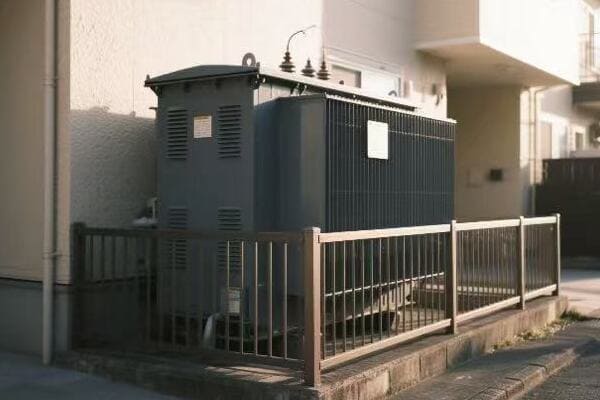
Key Differences Between Residential and Commercial Transformers
Let’s explore the main distinctions:
- Voltage and Power Capacity
- Size and Design Considerations
- Installation and Location
- Safety and Protection Features
- Maintenance and Lifespan
Voltage and Power Capacity
The most fundamental difference:
- Residential: Typically 120/240V, power ratings usually up to 100 kVA
- Commercial: Often 208V, 480V, or 600V, power ratings can exceed 2000 kVA
I once worked on a project converting a large residential property into a small business center. The existing residential transformer couldn’t handle the increased power demands, necessitating an upgrade to a commercial-grade unit to support the new office equipment and HVAC systems.
Size and Design Considerations
Physical differences are significant:
- Residential: Compact, often designed for aesthetic integration
- Commercial: Larger, focus on functionality and cooling efficiency
During a recent commercial development, we had to carefully plan the transformer location due to its size. Unlike residential units that can often be discreetly placed, the commercial transformer required a dedicated space with specific clearance requirements.
Installation and Location
Installation practices vary:
- Residential: Often pole-mounted or pad-mounted in neighborhoods
- Commercial: Frequently installed in dedicated electrical rooms or outdoor enclosures
Here’s a comparison table of key features:
| Feature | Residential Transformer | Commercial Transformer |
|---|---|---|
| Typical Voltage | 120/240V | 208V, 480V, 600V |
| Power Capacity | Up to 100 kVA | Up to 2000+ kVA |
| Size | Compact | Larger |
| Common Locations | Poles, ground pads | Electrical rooms, outdoor enclosures |
| Noise Level | Lower | Can be higher |
| Cooling | Often natural cooling | May require forced cooling |
Safety and Protection Features
Safety requirements differ:
- Residential: Focus on weatherproofing and basic overload protection
- Commercial: More advanced protection systems, often including remote monitoring
I recall a commercial project where we implemented a sophisticated protection system with real-time monitoring. This level of protection is rarely seen in residential settings but is crucial for ensuring business continuity in commercial applications.
Maintenance and Lifespan
Maintenance needs and expected lifespans vary:
- Residential: Generally lower maintenance, lifespan of 20-30 years
- Commercial: Regular maintenance required, can last 30+ years with proper care
Key points to remember about residential vs commercial transformers:
- Voltage and power capacity are the primary differentiating factors
- Size and design reflect the different application environments
- Installation locations and methods vary significantly
- Safety and protection features are more advanced in commercial units
- Maintenance requirements and expected lifespans differ
In my experience, understanding these differences is crucial for proper system design and planning. I’ve seen projects where underestimating the distinctions led to inadequate power supply or unnecessary over-engineering.
For instance, in a mixed-use development project, we had to carefully balance the needs of residential units with those of ground-floor commercial spaces. This required a hybrid approach, using residential-style transformers for the living spaces and a separate commercial unit for the retail areas.
As we move on to discuss leading brands for residential transformers, keep these differences in mind. Understanding the unique characteristics of residential transformers will help you appreciate the specific features and capabilities offered by different manufacturers.
Leading Brands for Residential Transformers (with Examples)?
Are you overwhelmed by the variety of transformer brands available for residential use? Choosing the right brand can be crucial for the reliability and efficiency of your home’s power supply. But which brands stand out in the residential transformer market, and what makes their products unique?
Leading brands for residential transformers include ABB, Siemens, Schneider Electric, and CHBEB. ABB offers durable, weather-resistant models ideal for outdoor use. Siemens focuses on energy-efficient designs with advanced protection features. Schneider Electric specializes in compact, environmentally friendly units. CHBEB provides cost-effective solutions with a focus on emerging markets. Each brand offers unique features catering to different residential needs and environments.

Analyzing Top Residential Transformer Brands
Let’s explore some leading brands and their offerings:
- ABB
- Siemens
- Schneider Electric
- CHBEB
- General Electric (GE)
ABB
ABB is known for its robust and reliable transformers:
- Model Example: ABB NTR 1P 25 kVA
- Key Features: Oil-immersed, corrosion-resistant, compact for pole-mount use
- Typical Application: Suburban housing projects, especially in harsh environments
I recently specified an ABB transformer for a coastal residential development. Its corrosion-resistant design was crucial for withstanding the salt-laden air, ensuring long-term reliability in the challenging marine environment.
Siemens
Siemens focuses on efficiency and smart features:
- Model Example: Siemens 1PH8137 Series
- Key Features: Quiet operation, overload protection, anti-theft locks
- Typical Application: Urban residential neighborhoods, smart home communities
During a recent smart neighborhood project, we chose Siemens transformers for their compatibility with smart grid technologies and their low noise output, which was essential in the densely populated area.
Schneider Electric
Schneider Electric specializes in eco-friendly solutions:
- Model Example: Trihal Dry Type Transformer 25-250 kVA
- Key Features: Flame-retardant, dry-type, suitable for indoor basements or rooftops
- Typical Application: High-rise residential buildings, eco-conscious developments
Here’s a comparison of these top brands:
| Brand | Key Strength | Typical Model | Best For |
|---|---|---|---|
| ABB | Durability | NTR 1P 25 kVA | Harsh environments |
| Siemens | Smart features | 1PH8137 Series | Urban smart homes |
| Schneider Electric | Eco-friendly | Trihal Dry Type | High-rise buildings |
| CHBEB | Cost-effective | CHBEB-RDT 30 kVA | Emerging markets |
| GE | Reliability | GE Type QL | Suburban developments |
CHBEB
CHBEB offers cost-effective solutions with growing global presence:
- Model Example: CHBEB-RDT 30 kVA Pad Mount
- Key Features: Oil-immersed, high-efficiency, RoHS compliant
- Typical Application: Residential power upgrade projects in developing regions
I recently recommended CHBEB transformers for a large-scale residential electrification project in Southeast Asia. Their combination of affordability and compliance with international standards made them an excellent choice for the project’s budget and technical requirements.
General Electric (GE)
GE is known for its reliable and widely compatible transformers:
- Model Example: GE Type QL Transformer
- Key Features: Versatile design, good overload capacity, low noise
- Typical Application: Suburban developments, residential retrofits
Key considerations when evaluating residential transformer brands:
- Assess the specific environmental conditions of your installation site
- Consider long-term efficiency and potential energy savings
- Look for brands that offer good after-sales support and warranty
- Check for compliance with local standards and regulations
- Evaluate the brand’s track record in your specific application type
In my experience, the choice of brand can significantly impact the long-term performance and reliability of a residential power system. I’ve seen cases where opting for a reputable brand with slightly higher upfront costs led to significant savings in maintenance and energy efficiency over time.
For example, in a recent suburban development project, we chose GE transformers despite their higher initial cost. The decision paid off as these units demonstrated excellent reliability and lower energy losses, resulting in reduced electricity costs for homeowners over the years.
As we move on to discuss key standards and compliance for residential transformers, remember that brand selection should align with these standards. The best brands not only meet but often exceed regulatory requirements, ensuring safety, efficiency, and reliability in residential power distribution.
Key Standards and Compliance?
Are you aware of the critical standards that govern residential transformers? Navigating the world of transformer compliance can be daunting, but understanding these standards is crucial for ensuring safety and efficiency. What are the key standards you need to know about, and why are they so important for residential transformer installations?
Key standards for residential transformers include IEC 60076 for international safety and performance, IEEE C57 for North American installations, and DOE efficiency regulations in the USA. Environmental standards like RoHS and REACH are also crucial, especially in Europe and Asia. Compliance with these standards ensures safety, efficiency, and environmental friendliness of residential transformers, and is often mandatory for installation and operation.
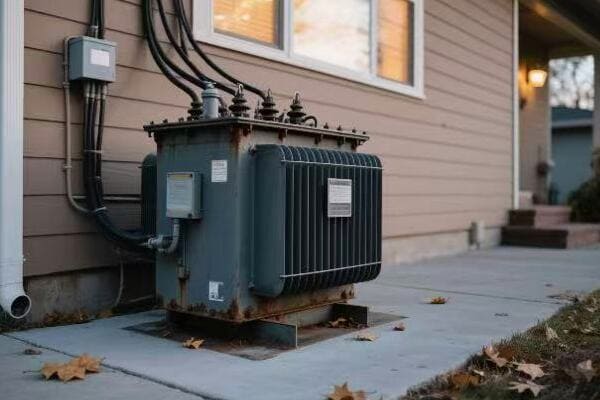
Understanding Key Standards and Compliance
Let’s explore the main standards and compliance requirements:
- International Electrotechnical Commission (IEC) Standards
- Institute of Electrical and Electronics Engineers (IEEE) Standards
- Department of Energy (DOE) Efficiency Regulations
- Environmental and Safety Standards
- Regional and Local Compliance Requirements
International Electrotechnical Commission (IEC) Standards
IEC standards are globally recognized:
- IEC 60076: Covers power transformers, including those used in residential applications
- Focuses on safety, performance, and testing requirements
- Widely adopted internationally, especially in Europe and Asia
I recently worked on a project exporting residential transformers to multiple countries. Adhering to IEC 60076 standards simplified the certification process across different markets, highlighting the importance of these international standards.
Institute of Electrical and Electronics Engineers (IEEE) Standards
IEEE standards are prominent in North America:
- IEEE C57: Comprehensive standards for transformers
- Covers design, manufacturing, and testing aspects
- Widely used in the United States and Canada
During a recent residential development project in Canada, ensuring compliance with IEEE C57 standards was crucial for meeting local regulatory requirements and utility specifications.
Department of Energy (DOE) Efficiency Regulations
DOE regulations focus on energy efficiency:
- Mandatory efficiency standards for distribution transformers in the USA
- Aims to reduce energy losses and promote conservation
- Updated periodically to drive improvements in transformer efficiency
Here’s a quick overview of key standards:
| Standard | Focus Area | Geographical Relevance |
|---|---|---|
| IEC 60076 | Safety and Performance | Global |
| IEEE C57 | Design and Testing | North America |
| DOE Efficiency | Energy Conservation | USA |
| RoHS/REACH | Environmental Safety | EU/Global |
Environmental and Safety Standards
Environmental compliance is increasingly important:
- RoHS (Restriction of Hazardous Substances): Limits use of certain materials
- REACH (Registration, Evaluation, Authorization and Restriction of Chemicals): EU regulation for chemical safety
- UL (Underwriters Laboratories): Safety standards, especially important in North America
I recall a project where we had to redesign a transformer to meet RoHS standards for a European client. This involved finding alternative materials for certain components, demonstrating the far-reaching impact of environmental regulations on transformer design.
Regional and Local Compliance Requirements
Many regions have specific additional requirements:
- National electrical codes
- Utility company specifications
- Local environmental and noise regulations
Key points to remember about standards and compliance:
- International standards like IEC provide a global baseline for safety and performance
- Regional standards such as IEEE C57 address specific market needs
- Energy efficiency regulations are becoming increasingly stringent worldwide
- Environmental compliance is crucial, especially for international markets
- Always check for additional local requirements in your specific installation area
In my experience, thorough compliance with relevant standards is not just about meeting legal requirements – it’s about ensuring the safety, reliability, and efficiency of residential power systems. I’ve seen projects where overlooking a specific standard led to costly redesigns or even rejection by local authorities.
For instance, in a recent residential project in California, we had to ensure compliance not only with national standards but also with state-specific energy efficiency requirements. This meant selecting transformers that exceeded the national DOE standards, ultimately resulting in lower operating costs for homeowners.
As we move to our final section on choosing the right transformer for residential use, keep these standards in mind. Compliance should be a key factor in your selection process, ensuring that your chosen transformer meets all necessary safety, performance, and efficiency requirements.
How to Choose the Right Transformer for Residential Use?
Are you feeling overwhelmed by the process of selecting the perfect transformer for your residential project? With so many factors to consider, making the right choice can seem daunting. But what if you had a clear, step-by-step approach to ensure you select the ideal transformer for your specific needs?
Choosing the right residential transformer involves considering local voltage requirements, installation method (pole vs. pad), insulation type (oil vs. dry), noise sensitivity, space constraints, and compliance with local standards. Key factors include power capacity needs, environmental conditions, future load growth, and energy efficiency ratings. Consulting with electrical professionals and utility companies is crucial for making an informed decision.
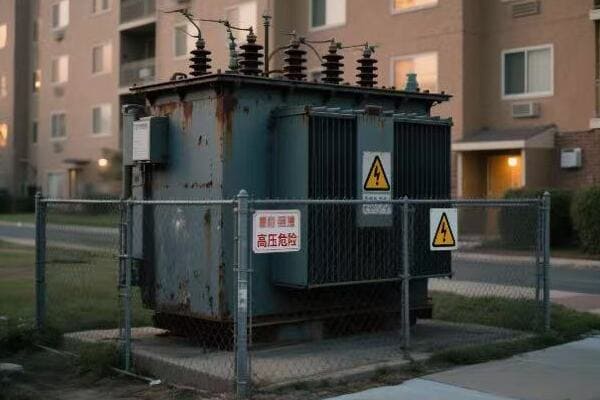
Key Steps in Selecting a Residential Transformer
Let’s break down the selection process into manageable steps:
- Assess Power Requirements
- Consider Installation Location and Method
- Evaluate Environmental Factors
- Check Compliance and Standards
- Factor in Long-Term Considerations
Assess Power Requirements
Start by accurately determining your power needs:
- Calculate total kVA required for the residential area
- Consider diversity factor (not all loads operate simultaneously)
- Plan for future load growth
I once worked on a suburban development where underestimating future power needs led to transformer overloading within a few years. Always factor in potential growth and changing energy consumption patterns.
Consider Installation Location and Method
The installation site significantly impacts your choice:
- Pole-mounted vs. pad-mounted options
- Space availability and aesthetic considerations
- Accessibility for maintenance and repairs
During a recent project in a historic neighborhood, we opted for pad-mounted transformers to preserve the area’s aesthetic appeal. This decision required careful planning for ground-level installation sites.
Evaluate Environmental Factors
Environmental conditions play a crucial role:
- Climate considerations (temperature extremes, humidity)
- Exposure to elements (coastal areas, high altitudes)
- Noise sensitivity in residential areas
Here’s a quick reference for environmental considerations:
| Factor | Consideration | Potential Solution |
|---|---|---|
| High Temperatures | Increased cooling needs | Choose units with better heat dissipation |
| Coastal Environment | Corrosion risk | Select corrosion-resistant models |
| Urban Setting | Noise concerns | Opt for low-noise or enclosed designs |
| Flood-prone Areas | Water damage risk | Consider elevated or submersible options |
Check Compliance and Standards
Ensure adherence to relevant standards:
- Local electrical codes and utility requirements
- Energy efficiency standards (e.g., DOE regulations in the USA)
- Environmental compliance (RoHS, REACH where applicable)
I recall a project where overlooking a specific local utility requirement led to delays in transformer installation and additional costs. Always double-check with local authorities and utility companies.
Factor in Long-Term Considerations
Think beyond immediate needs:
- Energy efficiency for long-term cost savings
- Scalability for future expansion
- Reliability and expected lifespan
- Maintenance requirements and costs
Key tips for choosing the right residential transformer:
- Conduct a thorough load analysis, including future projections
- Consult with local utility companies on their specific requirements
- Consider the total cost of ownership, not just the initial purchase price
- Evaluate the transformer’s efficiency ratings and potential energy savings
- Ensure compatibility with existing or planned smart grid technologies
In my experience, successful transformer selection often comes down to balancing immediate needs with long-term considerations. I’ve seen cases where investing in a slightly oversized or more efficient transformer paid off significantly in the long run, accommodating unexpected load growth and reducing energy costs.
For example, in a recent residential complex project, we chose a transformer with higher efficiency ratings despite the higher upfront cost. This decision resulted in noticeable energy savings for residents and easier compliance with evolving energy efficiency regulations.
Remember, selecting the right residential transformer is not just about meeting current needs; it’s about ensuring your power distribution system remains efficient, reliable, and adaptable for years to come. By carefully considering all these factors, you can make an informed decision that will serve your residential project well into the future.
Conclusion
Residential transformers play a crucial role in safely delivering power to our homes. Understanding their types, functions, and selection criteria is essential for homeowners, developers, and electrical professionals. By considering factors like power requirements, installation methods, environmental conditions, and compliance standards, you can ensure the right transformer choice for efficient and reliable residential power distribution.
Remember, at chbeb-ele, we’re not just sharing information – we’re empowering you to be part of the solution in creating a secure, clean, and efficient energy future. Let’s continue this journey together.
Recent Post
Quick Message
Request A free quote
We'd like to work with you
- +86 15558785111
- chbebgroup@chbebpower.com
- +86 15558785111
What We Do
CHINA BEI ER BIAN (CHBEB) GROUP, with 218 million in registered capital, originated from Beijing Beierbian Transformer Group. Headquartered in Beijing for R&D, it operates major production bases in Nanjing and Yueqing, producing high-quality products.
Latest Post
Latest Product
Contact Us
- +86 15558785111
- chbebgroup@chbebpower.com
- +86 15558785111
BeiJing
No 3,RongJing East Road,BeiJing Economic Technological Development Area,BeiJing,China
JiangSu
No 7️Xiangfeng Road,Jiangning,NanJing,JiangSu,China
WenZhou
No.211, Wei 16 Road, Industrial Zone, Yueqing, Wenzhou, Zhejiang, China.
XiangYang Industrial Zone ,YueQing,WenZhou,ZheJiang,China


